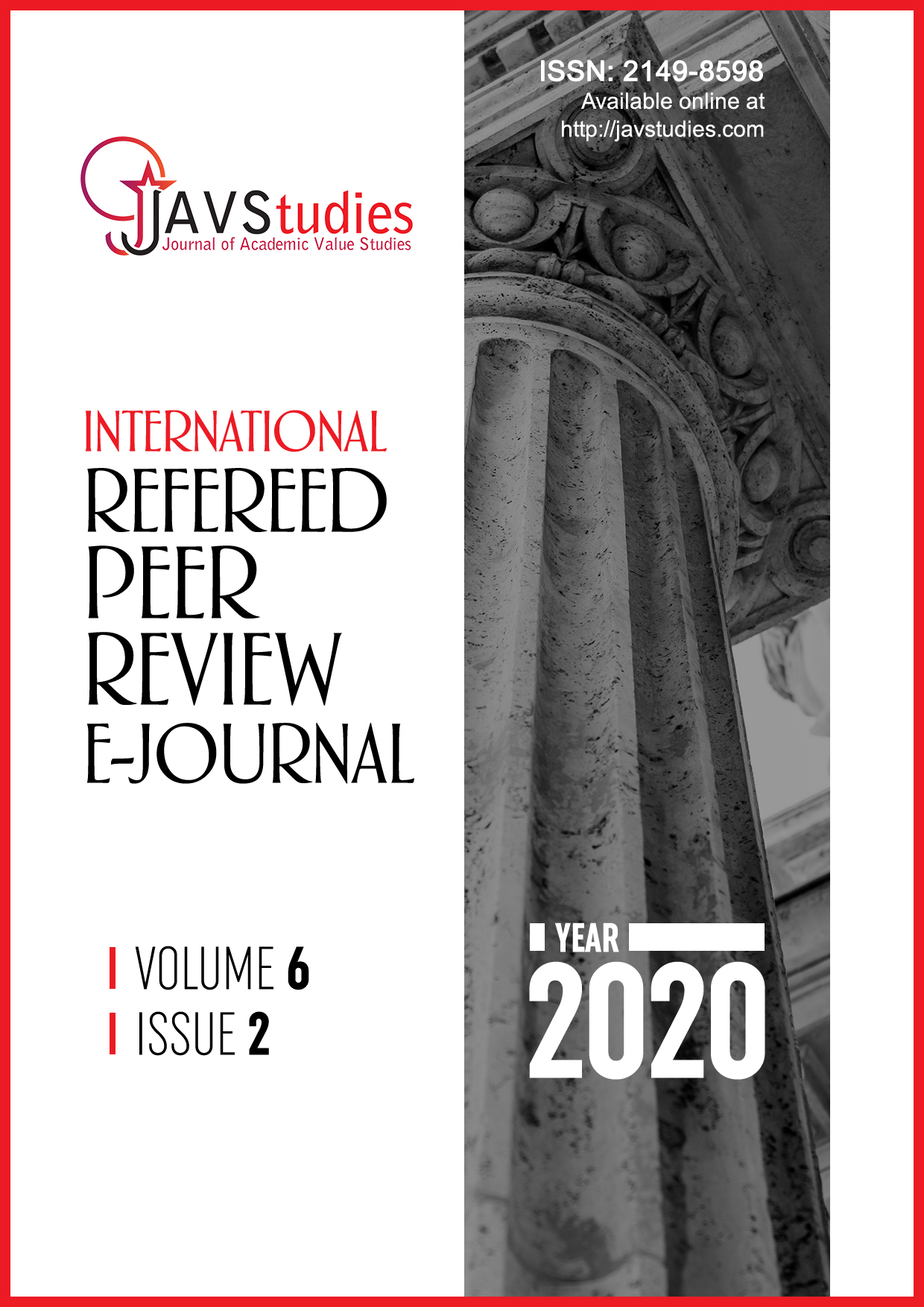Author :
Abstract
Bu çalışmanın amacı Şırnak ilinde ikamet eden hanehalklarının tüketim harcamalarını analiz etmektir. Gelir-tüketim arasındaki ilişki incelenecek ve 12 mal grubu için ayrı ayrı harcama esneklikleri hesaplanacaktır. Çalışmada ayrıca Engel Kanunu Şırnak ilinde yaşayan hanehalkları için geçerli mi değil mi sorusuna yanıt aranacaktır. Bilindiği üzere Engel Kanunu der ki tüketicilerin gelir seviyesi yükseldikçe gıda harcamalarına ayrılan bütçe payı azalmaktadır. Çalışmada Şırnak örnekleminde de benzer durumun söz konusu olup olmadığı ortaya konacaktır. Bu amaçla il genelinde 382 hanehalkına yüz yüze görüşme yöntemi ile anket uygulanmıştır. Yüzyüze görüşmeler ve anket neticesinde ilginç bulgulara rastlanmıştır. Engel fonksiyonları yardımıyla regresyon analizi kullanılarak her bir mal grubu için harcama esnekliği hesaplanmıştır. Çalışma neticesinde gelir düzeyi arttıkça gıda harcamalarına ayrılan payın azaldığı ortaya konmuştur. Bu ise Engel Kanunu Şırnak ili için geçerlidir anlamına gelmektedir. Engel Kanununun yanı sıra tüm harcama grupları için esneklikler hesaplanmış ve esneklik katsayılarına göre mallar sınıflandırılmıştır. Çalışmadaki dikkat çekici bulgulardan bir tanesi sağlık hizmetlerine erişim amaçlı ulaştırma harcamalarının bütçede önemli bir paya sahip olmasıdır.
Keywords
Abstract
The aim of this study is to analyze the consumption expenditures of households living in Sirnak province. The relationship between income and consumption will be analyzed and spending elasticities will be calculated for 12 product groups. The study will also seek an answer to the question of whether the Engel’s Law is valid for households living in Sirnak province or not. As it is known, the Engel’s Law says that as the income level of consumers increases, the budget allocated to food expenditures decreases. In the study, it will be revealed whether there is a similar situation in Sirnak sample. For this purpose, a questionnaire was applied to 382 households across the province by face-to-face interview method. As a result of face-to-face interviews and questionnaires, interesting findings were found. Using the regression analysis with the help of Engel’s functions, spending elasticity was calculated for each product group. As a result of the study, it was revealed that the share of food expenditures decreased as the income level increased. This means that the Engel’s Law is valid for the province of Sirnak. In addition to the Engel’s Law, elasticities were calculated for all expenditure groups and goods were classified according to their elasticity coefficients. One of the remarkable findings in the study is that transportation expenditures for health services have an important share in the budget.
Keywords
- Browning, E. K., Zupan, M., Micro Economics Theory and Applications, Çeviri Editörü: Prof. Dr. Recep KÖK, Nobel Yayınları, Ankara, 2014.
- Deaton, A. and Muellbauer, J. (1980a). Economics and Consumer Behavior,Cambridge: Cambridge University.
- Deaton, A. and Muellbauer, J. (1980b). Economics and consumer behaviour. Cambridge, UK, Cambridge University Press.
- Deaton, A. ve J. Meulbauer, Economics and Consumer Behaviour, Cambridge University Press, New York, 1990.
- Dinler, Z., Mikro Ekonomi, Gözden Geçirilmiş 23. Baskı, Ekin yayınları, Bursa, 2012.
- Gürler, A. Z., Genel Ekonomi, Nobel yayınları, 6. Baskı, 2016, Ankara.
- Hatırlı, S. A., Mikroekonomi, Genişletilmiş 2. Baskı, Alter Yayınları, Ankara, 2014.
- Hatırlı, S.A., V. Demircan ve A. R. Aktaş, “Isparta İlinde Ailelerin Balık Tüketiminin Analizi”, Süleyman Demirel Üniversitesi İktisadi ve İdari Bilimler Fakültesi Dergisi, 9.1, 245-256 (2004).
- Koutsoyiannis, A., & Sarımeşeli, M. (1997). Modern mikro iktisat. Gazi Kitabevi.
- Mas-Collell, A., Winston, M.D., Green J.R., Microeconomic Theory , Oxford Universty, New York, 1995.
- Nicholson, W., Microeconomic Theory: Basic Principles and Extensions, Seventh ed. (New The Dryden Press, Orlando, 2004.
- Pehlivanoğlu, F. (2005), “Engel Kanununun Kocaeli Uygulaması”, Yüksek Lisans Tezi, Kocaeli Üniversitesi Sosyal Bilimler Enstitüsü, Kocaeli.
- Sloman, J., Mikro İktisat, (Çev. Ahmet Çakmak), Bilim ve Teknik Yayınevi, İstanbul, 2003.
- Steven M. Shugan, “Are Consumers Rational? Experimental Evidence?”, Vol. 25, No., January–February 2006, s.2.
- Sulgham, A.K. 2006. “Econometric Essays on Specification and Estimation of Demand Systems.” PhD dissertation, University of Georgia.
- Şengül, S., (2001), Türkiye’de Yoksulluk Profili ve Gelir Gruplarına Göre Gıda Talebi, DoktoraTezi, Çukurova Üniversitesi, Fen Bilimler Enstitüsü, Adana.
- Thomas, R. L. (1987). Applied Demand Analysis. Newyork: Longman, s.74-77.
- Ünsal, E., Mikro İktisat, Genişletilmiş 10. Baskı, Bigbang Yayınları, Ankara-2014.
- Varian, H. R.. Microeconomics Analysis. W. Q. Norton and Company: Newyork-1992.
- Vashi, V. H., The Effect of Price, Advertising and Income on Consumer Demand: An Almost Ideal Demand System Investigation, Ph.D. Dissertation, Virginia Polytechnic Institute and State University, 1994.
- Blackorby, C., Primont, D. And Russell, R., Budgeting, Decentralization and Aggregation, Analysis of Economic and Measurement, 4(1), s: 23-25, 1975.
- Sigeze, Çiler (2012). Türkiye’de Hanelerin Tüketim Harcamaları: Panel Verilerle Talep Sisteminin Tahmini, Yayınlanmamış Yüksek Lisans Tezi, Çukurova Üniversitesi, Sosyal Bilimler Enstitüsü.
- Strotz, R. H. (1959). The utility tree--a correction and further appraisal. Econometrica: Journal of the Econometric Society, 482-488.
- Fowles, Jib, (1996). Advertising and Popular Culture, Sage: London.
- Toffler, A. (1981). Üçüncü dalga. İstanbul: Altın Kitaplar.
- Şenesen, Ü., & Selim, R. (1995). Consumption patterns of Turkish urban and rural households in 1987. METU Studies in Development, 22(2), 207-220.
- Pollak, R. A., & Wales, T. J., 1979. Welfare Comparisons and Equivalence Scales. http://www.vcharite.univmrs.fr/pp/lubrano/atelier/pollak w1979.pdf.





